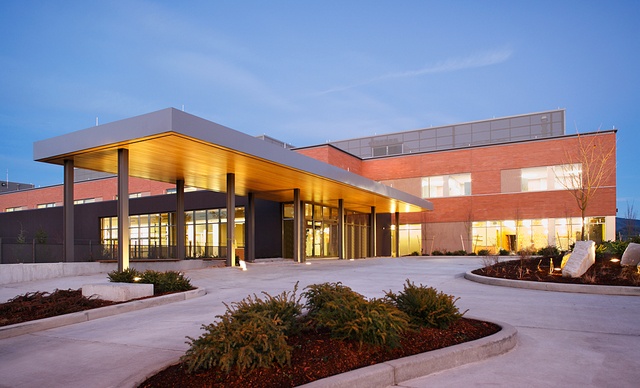Margaret Frederickson was a lucky woman.
When she fell and broke her leg early Wednesday morning on June 15, 1949, she didn’t need to be transported to the nearby Auburn hospital – instead, she was treated at Enumclaw’s new Community Memorial Hospital, which had just opened its doors a few hours earlier, accepting Frederickson as its very first patient.
From that moment on, a hospital has always been an important part of the Enumclaw community, and this month, the St. Elizabeth Hospital is celebrating its fifth year on the Plateau.
“People are friendly here and everyone knows everybody. I’ve really grown up with the community here,” said Nancy Caldwell, who’s been working with the hospital for three decades, starting when the hospital was still named the Community Memorial Hospital. “I’ve seen families have their children and grandchildren delivered at the hospital and five of my own grandchildren were born at the hospital.”
“Folks who live out here want to stay local and like the fact they don’t have to leave town to go to the hospital,” she continued. “Having a St. Elizabeth close to home is more than just a convenience, it saves lives. We see that every day.”
Hospital history
The construction of the Community Memorial Hospital began Memorial Day, May 30, 1948. The groundbreaking, and the resulting hospital, was dedicated to the young men of the Enumclaw community, and young men around the country, who were killed in the armed forces.
“This dedication ceremony marks the beginning of time when much of the fear can be eliminated that sometime an emergency of illness or accident in our family or community would strike and we would not have needed hospital emergencies close enough to save us,” a Courier-Herald reporter wrote May 27, 1948. “It also… marks us as a community which is as forward looking and progressive socially as we are commercially.”
A year later, a plaque was dedicated to 60 Enumclaw and surrounding community members who were killed in action. The plaque is currently with the local Veterans of Foreign Wars post in town, said Scott Thompson, spokesman for the hospital.
The hospital opened up with 22 beds, just in time for Frederickson and baby Karen Francis, who made local history by being the first child born in the new hospital.
The total cost for the hospital, construction and patient care costs, was approximately $196,000.
The hospital remained untouched until 1968, when a new wing and basement were added onto the building.
In 1999 the hospital added outpatient chemotherapy and imaging services to its growing list of specialties. It was also the year the hospital’s name changed to the Enumclaw Community Hospital.
It was in 2001 the hospital was ranked by Solucient as one of the Top 100 Hospitals in the U.S.
A heliport was built on top of the hospital in 2005, and it was named the “Most Wired Hospital” in the small/rural hospital category by Hospitals & Health Networks magazine in 2006. The hospital also changed its name to the Enumclaw Regional Hospital to “reflect our desire to emphasize the hospital’s broad service area,” said Dennis Popp, the previous administrator of the hospital.
The hospital joined with Franciscan Health System in 2007.
In February 2011, the hospital was closed and replaced by St. Elizabeth Hospital after 61 years of service.
“Our community’s replacement hospital signals a new era for health care on the Plateau,” Popp said about the new hospital, echoing the words written in 1948.
St. Elizabeth cost approximately $75 million to build and outfit for patient care.
The name, which comes from the Catholic patron saint of nurses, was chosen to fit with others in the Franciscan Health Care family.
When the new hospital was built, the old one was torn down, as studies showed it would be too costly to update the old building to accommodate the needs of a modern medical facility.
Currently, St. Elizabeth operates as a 25-bed critical access hospital with all the resources residents expect and need from a community hospital, including 24 hours a day, seven days a week emergency care to surgery, a family birth center and general hospital services.
Since opening in 2011, St. Elizabeth has seen the delivery of close to 1,500 babies, treated more than 69,00 emergencies, and averages 1,500 surgical cases and 1,500 inpatient stays each year.


